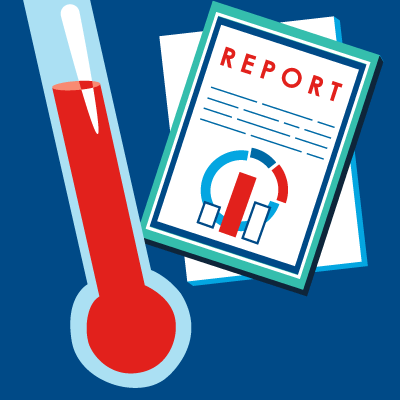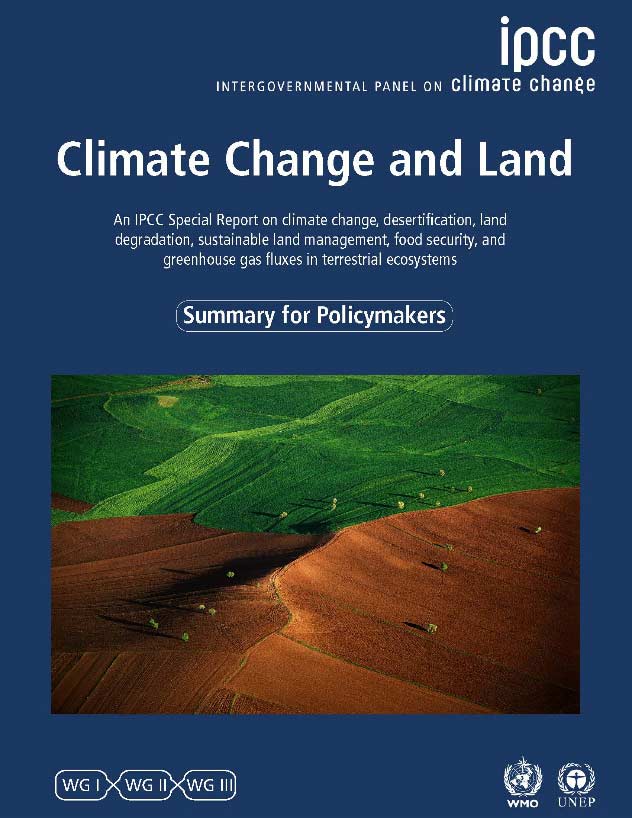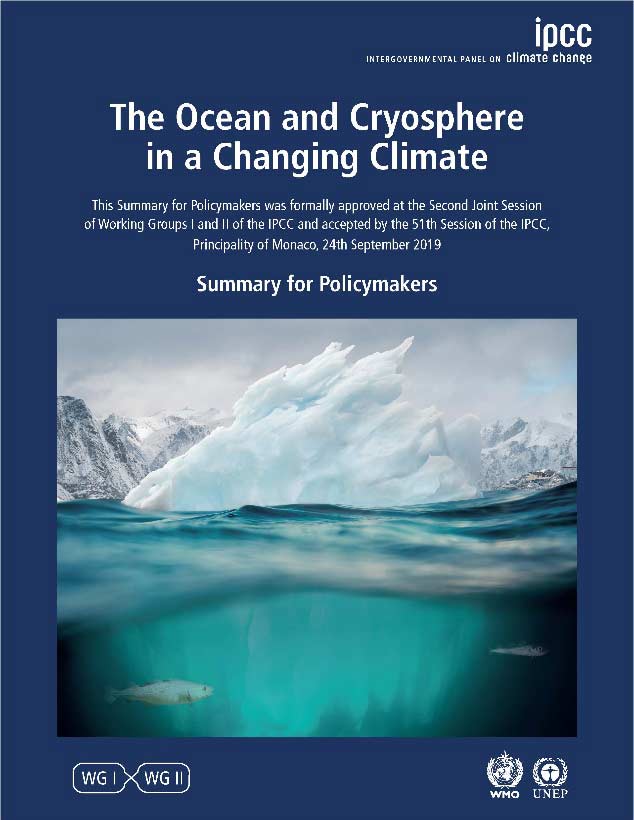
The Intergovernmental Panel on Climate Change (IPCC) was established in 1988 and currently has 195 member countries. Hundreds of scientists from all over the world contribute to IPCC reports. Two IPCC Special Reports were released in the run-up to the U.N. Climate Summit held in New York this September. The first, Climate Change and Land, was released on August 8; the second, The Ocean and Cryosphere in a Changing Climate, on September 25. In this blog, I'll provide a few highlights from these two most recent reports and look at what's ahead for the IPCC.


Land: A Resource in Danger and a Potential Solution
The Special Report on Climate Change and Land is the first to examine the land-climate dynamic exclusively. A striking finding is that, on a global scale, land surface temperature has risen twice as much as the average ocean temperature since pre-industrial times. Specifically, mean land surface air temperature is estimated to have risen by approximately 1.53°C.
Land plays a critical role in Earth's climate system. It is both a source and a sink of greenhouse gases (GHGs). As a carbon sink, land mitigates—but only in part—the impact of the estimated 52 gigatons of greenhouse gases that we release into the atmosphere every year. Rising land surface temperatures are already having an impact on the frequency, intensity, and duration of heat waves, droughts, extreme rainfall events, and wildfires—impacts that vary both in degree and even in direction by region. In turn, these extreme events further exacerbate land degradation, creating a positive feedback loop reinforcing and increasing the effect.
Several land-based solutions for reducing emissions and removing carbon from the atmosphere are offered to policymakers. These include reducing deforestation (as well as planting new forests and restoring existing ones) and implementing sustainable land management practices. Through sustainable land management, soils can be made more productive, thus reducing the need to clear forests to make way for more cropland and grazing land as the population grows. The report also urges large-scale shifts in the way we produce and consume food.
Water: Carbon Sink and Thermal Inertia
The Paris Agreement, which was reached in 2015, set a goal of keeping the increase in global surface temperatures to well below 2°C and to pursue efforts to further limit the increase to 1.5°C. The IPCC’s Climate Change and Land report stated that land surface air temperatures have already increased by 1.53°C.
Fortunately, our oceans and cryosphere (the frozen water on Earth’s surface, including glaciers, ice sheets, snow cover, and the like) exert a moderating influence. Oceans, which cover more than 70% of Earth’s surface, are slower to both absorb and release heat, and this “thermal inertia” effectively mitigates the global average temperature increase. Oceans also represent Earth’s largest carbon sink.
The Need to Reduce GHG Emissions
The IPCC Special Report The Ocean and Cryosphere in a Changing Climate makes clear that past and current anthropogenic greenhouse gases (GHG) emissions have and will result in climate feedbacks and changes that will persist for decades or even millennia and that cannot be avoided, regardless of the actions we take. The hope is that action now can lessen those impacts and enable us to adapt.
Headlines from the report include:
- There is emerging evidence for an increase in annual global proportion of Category 4 or 5 tropical cyclones in recent decades as the oceans warm, and a possible northward shift in maximum tropical cyclone intensity in the Northwest Pacific.
- Extreme sea level events (and resulting coastal flooding) will become more frequent at most locations. In many locations, coastal flooding from rising sea levels that historically occurred once per century are projected to occur at least annually by 2050.
- Rising global temperatures have caused widespread melting of the cryosphere which has, in turn, contributed to sea-level rise. The permafrost, which stores vast amounts of carbon and methane, is thawing at record rates. Under some climate scenarios, this thaw could release enormous quantities of GHGs, exacerbating climate change.
- Between 2006 and 2015, global mean sea level has risen at a rate of 3.6 mm per year. This is about 2.5 times the rate for the nine decades from 1901-1990. The rise is due to both the melting of the cryosphere and to thermal expansion as the oceans become warmer.
What’s Ahead?
So, what’s next for the IPCC? The IPCC is currently in its sixth climate assessment cycle (AR6). The next Synthesis Report is scheduled for release in June 2022. It will be a synthesis of the recent special reports, including the two described in this blog, as well as the findings of three IPCC Working Groups, one on the science, models, and forecasts; a second on adaptation and impacts; and a third on mitigation. Working Group I's report, "Climate Change 2021: The Physical Science Basis" is due out in April 2021.
Read my blog "Insurers Have a Critical Role to Play in Mitigating Climate Change"



